Bad breath, also known as halitosis, is a common oral issue that many people face. Whether caused by diet, oral hygiene problems, or underlying health conditions, bad breath can negatively affect one’s social interactions, psychological well-being, and self-confidence. Fortunately, most bad breath problems can be effectively prevented and improved through proper oral care habits and lifestyle adjustments.
This article will explore in detail the causes of bad breath, common types of halitosis, prevention, and daily care methods, helping readers understand how to maintain fresh and healthy breath through scientifically-backed oral care routines.
1. Causes of Bad Breath
The causes of bad breath can be divided into physiological and pathological categories. Physiological bad breath is often caused by diet and oral environment factors, while pathological bad breath is more closely related to certain underlying health conditions. Understanding the specific causes of bad breath will help in taking effective care measures.
1.1 Physiological Causes of Bad Breath
Physiological bad breath is generally not a sign of serious health issues and is usually caused by the following factors:
1.1.1 Dietary Habits
Certain foods, such as garlic, onions, coffee, and alcohol, can lead to bad breath. The volatile compounds in these foods are absorbed during digestion and are released through the breath, causing unpleasant odors.
1.1.2 Dry Mouth
Dry mouth (also known as xerostomia) is a common cause of bad breath. Saliva helps clean the mouth, keeps it moist, and prevents bacterial growth. When saliva production is insufficient, the mouth becomes dry, making it more prone to bad breath.
1.1.3 Morning Breath
Many people experience bad breath upon waking. This is primarily due to reduced saliva production during sleep, allowing bacteria in the mouth to multiply rapidly and produce foul odors. This type of bad breath is typically temporary and can be improved by brushing and rinsing the mouth after waking.
1.1.4 Smoking
Smoking not only harms oral health but also contributes to bad breath. Chemicals in tobacco adhere to the mouth and produce persistent odors. Smoking also reduces saliva production, exacerbating the dry mouth problem and further worsening bad breath.
1.2 Pathological Causes of Bad Breath
Pathological bad breath is typically linked to certain oral diseases or systemic health conditions. Common pathological causes of halitosis include:
1.2.1 Oral Diseases
- Cavities and Periodontal Disease: Cavities (tooth decay) and periodontal disease (gum infections) are among the most common oral conditions. Bacterial infections in decayed teeth and inflamed gums produce foul-smelling gases, leading to bad breath.
- Tongue Coating: Bacteria, food particles, and dead cells accumulate on the tongue, forming a coating that can be a source of bad breath. This issue is particularly noticeable when the coating is thick or when the tongue is not cleaned properly.
1.2.2 Systemic Diseases
Certain systemic diseases can also cause bad breath. For example:
- Diabetes: People with diabetes may experience “fruity” breath due to the breakdown of fats into ketones, which are then expelled through the breath.
- Liver Disease: Poor liver function can lead to the accumulation of toxins in the body, causing bad breath with a distinctive rotten or foul odor.
- Kidney Disease: Kidney failure can result in the buildup of waste products in the body, leading to a uremic “urine-like” breath odor.
- Gastrointestinal Issues: Gastroesophageal reflux disease (GERD), indigestion, ulcers, and other gastrointestinal issues can cause acid reflux, which brings acidic gases into the mouth, leading to bad breath.
1.2.3 Oral Infections
Oral infections, such as mouth ulcers or infections following tooth extraction, can also cause bad breath. When wounds do not heal properly or are infected, they can lead to foul-smelling breath.
1.3 Types of Bad Breath
Bad breath can be categorized into the following types:
- Physiological Halitosis: Temporary bad breath caused by food intake, typically resolved with brushing or rinsing.
- Pathological Halitosis: Bad breath caused by oral diseases or systemic conditions, usually accompanied by other symptoms, requiring medical attention.
- Persistent Bad Breath: If bad breath persists for a prolonged period and does not improve with regular oral hygiene, it could be a sign of underlying oral or systemic health issues, and professional treatment is recommended.
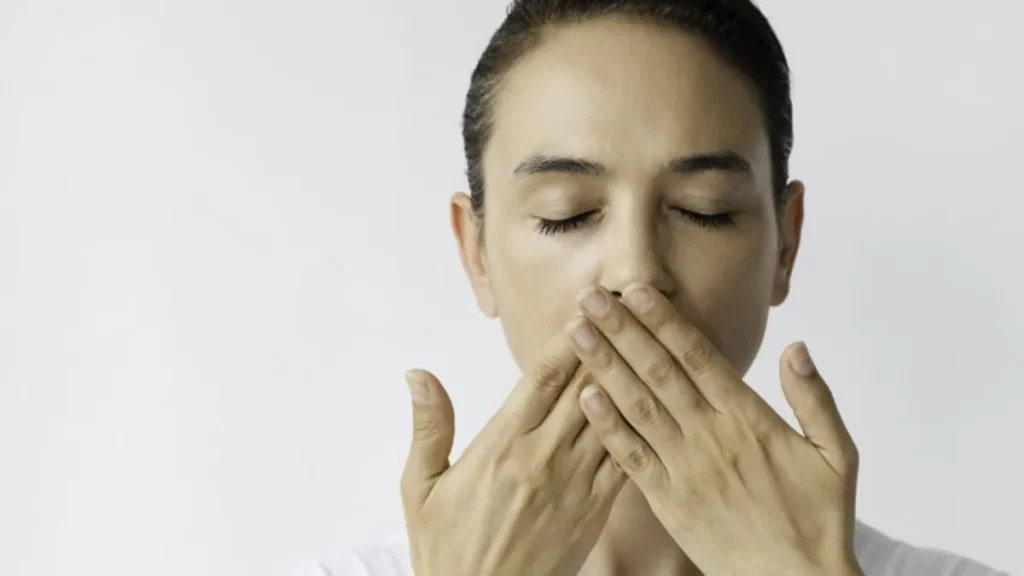
2. Daily Oral Care Methods
Most cases of bad breath can be prevented and improved with proper daily oral care habits. Below are some common and effective oral care practices for preventing and managing bad breath.
2.1 Maintain Good Oral Hygiene Habits
Oral hygiene is the foundation of preventing bad breath. Regular and proper oral care can reduce bacterial growth in the mouth, preventing the development of foul odors.
2.1.1 Brush Your Teeth Twice a Day
Brushing your teeth is the most basic method of maintaining oral cleanliness. Brushing twice a day helps remove food particles and bacteria from the teeth, reducing bad breath.
- Correct Brushing Technique: Use a soft-bristled toothbrush and brush gently to avoid damaging the gums. Make sure to brush for at least two minutes, ensuring all surfaces are cleaned. Using fluoride toothpaste helps protect tooth enamel and prevent cavities.
- Clean Your Tongue: The tongue can accumulate bacteria, food particles, and dead cells, which can lead to bad breath. When brushing your teeth, don’t forget to gently clean your tongue as well. A tongue scraper or toothbrush can be used to remove tongue coating.
2.1.2 Use Dental Floss to Clean Between Your Teeth
Food particles and bacteria trapped between the teeth can lead to gum disease, cavities, and bad breath. Using dental floss daily helps clean between your teeth, reducing bacterial buildup and preventing bad breath.
2.1.3 Use Mouthwash
Antibacterial mouthwash can help clean the mouth, reduce bacterial growth, and freshen the breath. Choose a mouthwash with antimicrobial ingredients, such as chlorhexidine or essential oils, to combat bad breath-causing bacteria. Avoid mouthwashes with excessive alcohol content, as they may dry out the mouth.
2.2 Keep Your Mouth Moist
Dry mouth is a common cause of bad breath. Keeping your mouth moist can help reduce bacterial growth and prevent unpleasant odors.
2.2.1 Drink Plenty of Water
Staying hydrated helps stimulate saliva production, which in turn keeps the mouth moist and prevents dry mouth. Aim to drink sufficient water throughout the day, especially in the morning after waking up to prevent dry mouth and bad breath.
2.2.2 Avoid Excessive Dry Mouth
Avoid long periods in air-conditioned environments or smoking, as both can cause dry mouth. If you experience chronic dry mouth, consider using saliva substitutes or consult a dentist for appropriate treatment.
2.3 Healthy Diet
Diet plays a significant role in oral health. Certain foods can help freshen the breath, while others may contribute to bad breath.
2.3.1 Avoid Foods That Cause Bad Breath
Limit the intake of foods such as garlic, onions, coffee, and alcohol, as these foods contain volatile compounds that can cause bad breath. These compounds are absorbed during digestion and released through the breath.
2.3.2 Eat Foods That Help Freshen Breath
Certain foods, such as fresh vegetables (carrots, celery) and fruits (apples, pears), have natural breath-freshening properties and help maintain oral hygiene.
2.4 Regular Dental Checkups
Regular dental checkups are an important part of preventing bad breath. Through routine checkups, your dentist can identify and address potential oral health problems, such as cavities, gum disease, or tongue coating, which may be contributing to bad breath.
2.4.1 Have Annual Dental Checkups
Visit your dentist at least once a year for a comprehensive oral examination. Regular checkups allow early detection and treatment of oral problems, which helps prevent bad breath.
2.4.2 Treat Oral Health Issues Early
If your bad breath is caused by dental issues, such as cavities, gum disease, or tongue coating, treating these problems promptly can greatly improve your breath. For example, treating gum disease or cavities often leads to a significant reduction in bad breath.
2.5 Quit Smoking and Limit Alcohol Consumption
Both smoking and excessive alcohol consumption not only harm oral health but also contribute to bad breath. Quitting smoking and reducing alcohol intake can help freshen your breath and improve overall oral health.
3. Conclusion
Bad breath is a common issue, but it can be effectively prevented and improved through proper oral care and lifestyle changes. Maintaining good oral hygiene habits, a healthy diet, adequate hydration, and regular dental checkups are essential for preventing bad breath. If bad breath persists despite maintaining proper oral care, it may be a sign of an underlying health problem that requires professional treatment. By focusing on oral health, keeping your breath fresh, and addressing oral issues early, you can enjoy a healthier and more confident lifestyle. Therefore, everyone should develop the habit of proper oral care and maintain fresh breath for a comfortable and healthy life.











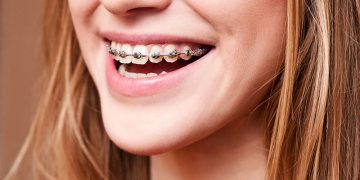
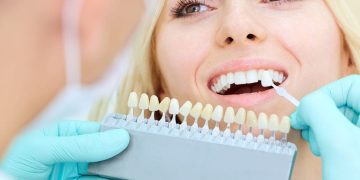



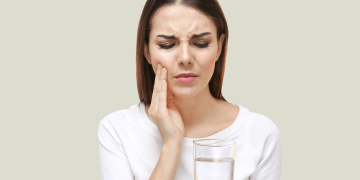
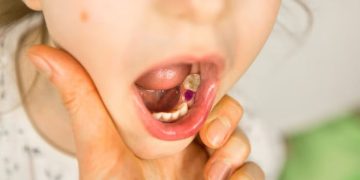
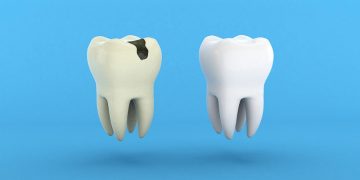






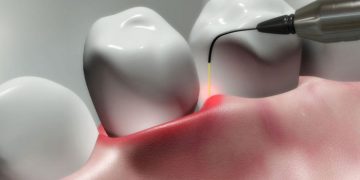



















Discussion about this post